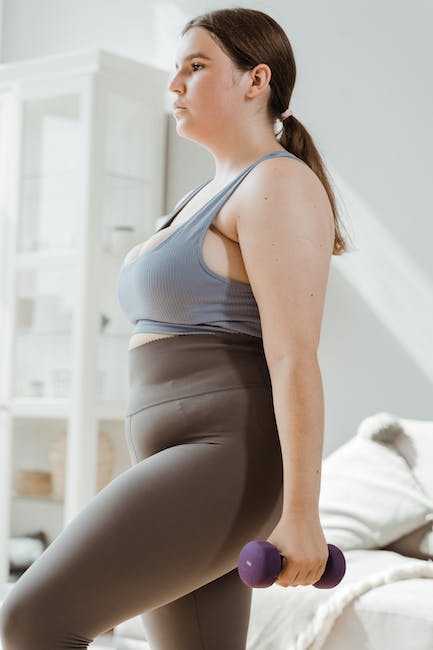Attention gym enthusiasts! Are you tired of slipping weights and sagging grips while trying to lift heavy? Fret not, for we have the perfect solution – weight lifting straps! But wait, do you know the proper way to use them? Fear not, dear reader, for we’re here to give you a rundown of the dos and don’ts of strap-styled weightlifting. Buckle up, or rather, strap up, for a humorous yet informative article on properly lifting weights with straps!
Contents
- 1 Understanding the Importance of Weight Lifting Straps
- 2 Mastering the Proper Technique for Wearing Weight Lifting Straps
- 3 Tips for Choosing the Right Weight Lifting Straps for Your Needs
- 4 Practices to Improve Your Grip Strength and Reduce Dependency on Weight Lifting Straps
- 5 Common Mistakes to Avoid When Using Weight Lifting Straps
- 6 Don’t Get Strapped Up in the Wrong Way!
Understanding the Importance of Weight Lifting Straps
So, you want to know about lifting straps? You’ve come to the right place. Let’s dive into the intricacies of this underrated piece of lifting equipment.
First off, what are lifting straps? Essentially, they’re long pieces of sturdy fabric that wrap around your wrists and the barbell. They’re a godsend for those whose grip strength can’t quite keep up with their lifting ability. Plus, they look badass. Who doesn’t want to look like a weightlifting superhero?
Now, some may argue that using lifting straps is “cheating” or takes away from the pure joy of lifting without any assistance. But let’s be real here – who the hell cares about purity when you’re trying to hit those gains? Strap that shit on and lift with confidence, my friend. Just make sure you’re using proper form and technique, because straps won’t save you from an injury caused by sloppy lifting. Plus, nobody wants to be the guy who drops the bar on their face in front of a gym full of people. Trust me on this one.
Mastering the Proper Technique for Wearing Weight Lifting Straps
Ahoy, gym-goer! Are you tired of struggling with heavy weights slipping off your sweaty palms? Fear not, for weight lifting straps can be a game-changer for your training. However, before you strap on, let’s make sure you master the proper technique for wearing them.
First and foremost, make sure you have the correct type of weight lifting straps for your needs. There are two main variations: the traditional lifting straps and the figure-eight straps. The traditional straps loop around the bar and your wrist, whereas the figure-eight straps create an 8-shape around your wrist and the bar. Whichever you choose, make sure they fit snugly and correctly before you begin your workout.
Next, it’s time to strap up. Let’s say you’ve got your traditional lifting straps ready to go. Place your wrist through the loop and make sure the strap sits above your palm crease. Then, wrap the excess fabric around the bar and straighten your wrist to create tension. This will ensure a secure grip, allowing you to lift heavier weights without compromising your form. Don’t forget to repeat the process for the other hand, unless you want to be lopsided like a drunken pirate.
Lastly, it’s important to remember that weight lifting straps are a tool, not a crutch. Don’t become overly reliant on them and neglect your grip strength. Incorporate grip strengthening exercises into your routine, such as farmers walks or plate pinches. This will not only keep your forearms looking jacked, but also improve your overall lifting performance. Now go forth, ye swashbuckler, and conquer that weight rack with your newfound strap-wearing prowess!
Tips for Choosing the Right Weight Lifting Straps for Your Needs
Are you tired of struggling with weightlifting equipment? Do you want to avoid blisters and calluses? Look no further than weight lifting straps! Here are some tips for choosing the perfect pair for your lifting routine:
Firstly, consider the material. You want something durable and long-lasting. While some prefer leather straps for a traditional lifting aesthetic, there are newer materials like nylon and cotton that are just as effective – and vegan friendly! Make sure you choose a material that will withstand the test of time, and won’t leave you slipping and sliding.
Secondly, get the right size. You don’t want to get stuck mid-lift because your straps are too loose or tight. Make sure you measure your wrists and hands, and leave enough slack for a comfortable fit but also that will hold the weight you’re lifting. The last thing you want is to end up tangled in your own straps
Finally, don’t forget to add some flare to your weightlifting routine! Look for straps with colors and patterns that speak to you. Want to feel like an animal in the gym? Get some tiger-striped straps. Want to show off your patriotism? Get a pair of “Murica themed straps. The possibilities are endless! And on that note, happy lifting – don’t forget to accessorize.
Practices to Improve Your Grip Strength and Reduce Dependency on Weight Lifting Straps
Are you tired of feeling like a weakling at the gym because you can’t hold onto the dumbbells without using those pesky weight lifting straps? Fear not my friend, because with these simple grip strengthening exercises, you’ll be able to ditch those straps and show off those forearms in no time.
First up, we have the classic farmer’s carry. It’s pretty self-explanatory – you grab some heavy stuff and walk around with it. But be warned, this exercise is not for the faint of grip. Don’t just pick up two tiny kettlebells and call it a day. Pick up the heaviest dumbbells you can handle and walk until your hands start to resemble Hercules’. And remember, no cheating by using your straps!
Next, let’s talk about finger strength. No, not the kind that comes from endlessly scrolling through Instagram. We’re talking about hanging from a pull-up bar with just your fingers. Start with a few quick hangs and work your way up to holding on for dear life for at least 10 seconds. Need a little extra challenge? Try doing pull-ups with just your fingers. Good luck, my friend.
Common Mistakes to Avoid When Using Weight Lifting Straps
Let’s face it, using weight lifting straps can be a bit tricky when you’re a beginner. But once you get the hang of it, you’ll wonder how you ever lifted heavy without them. But just like any other gym accessory, there are some common mistakes you need to avoid when using weight lifting straps.
First and foremost, one of the biggest mistakes people make is using the straps as a crutch. I mean, come on, you didn’t spend all that money just to have the straps do all the heavy lifting for you. Remember, the straps are there to assist you, not replace your hard work. So, make sure that you’re using proper form and technique, and only use the straps when you really need them.
Another mistake is not adjusting the straps properly. If you don’t tighten them enough, they’ll slip, and if you tighten them too much, they’ll cut off your circulation. So, make sure you adjust them to the right length before you start lifting. And trust me, you don’t want to be that person who has to stop their workout because their fingers went numb.
- Make sure you’re using the right type of strap for your needs. There are different types of straps available to suit different lifting styles.
- Don’t wrap the straps too tightly around the bar. This will not only make it more difficult to unwarp them but will also put extra pressure on your wrists.
- Don’t forget to wash your straps regularly. Sweaty straps are a breeding ground for bacteria and can cause skin irritation.
So, there you have it, folks. If you want to avoid being a weight lifting strap newbie, make sure you follow these tips. And remember, always keep safety first, and don’t be afraid to ask for help if you’re unsure about how to use them properly. Before you know it, you’ll be lifting like a pro.
Don’t Get Strapped Up in the Wrong Way!
Thanks for sticking with us till the end of this article! We hope you now understand that weight lifting straps are not just a simple accessory, but a vital tool for enhancing your lifting game. Remember: using them properly is crucial to avoid any injuries or embarrassment at the gym.
No one wants to be that person who straps up incorrectly and ends up looking like a clumsy buffoon. So, take your time, follow the techniques we’ve shared with you, and strap up like a pro.
And who knows, maybe one day you’ll be lifting so heavy that you’ll need to invest in a “Strap Safety Harness.” Until then, we wish you happy lifting, and let those gains keep coming!








Leave A Comment